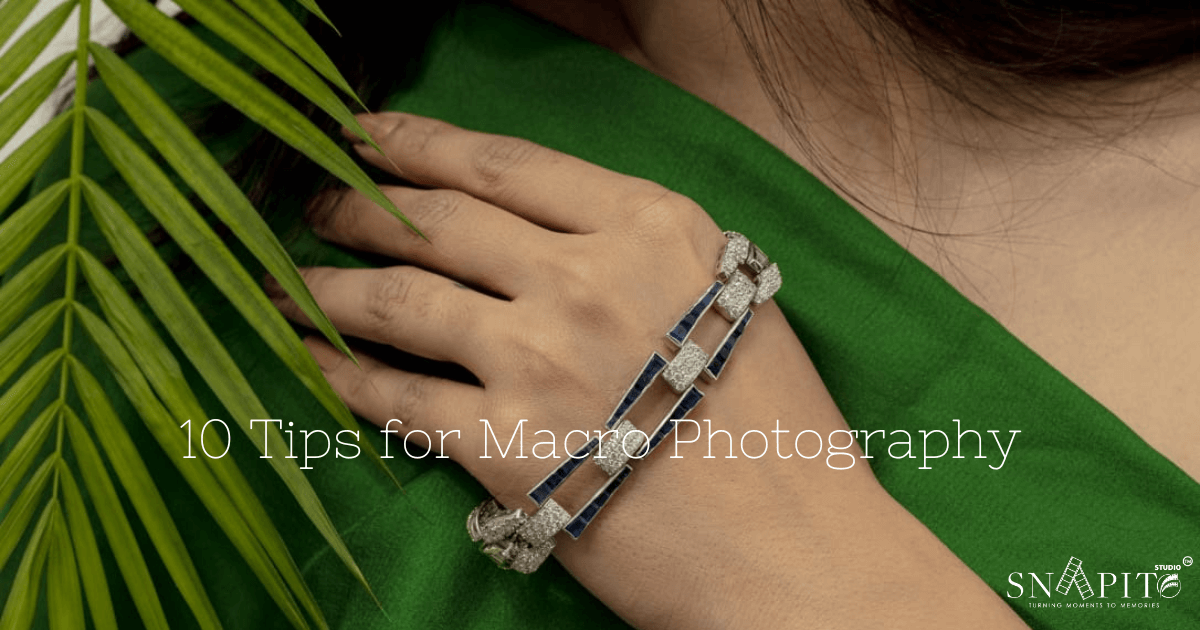You’ve tried out macro photography, whether you’re a seasoned photographer or a newbie. Another chance to view daily life differently and capture commonplace items in a fresh light is through close-up photography. They claim that if you want to try macro photography, you need special equipment, however, these tips and methods can be used with an ordinary DSLR camera.
1. Lenses Matte
Any expert would advise you to get a specialized lens if you want to take macro photos. The suggested focal lengths are 50–60 mm or at least 100 mm. If you’re an experienced photographer, you probably already know that a 1:1 ratio is necessary for proper macro photography.
2. Focus Manually
It’s preferable to utilize manual focus when you’re up close and personal with a subject since you’ll have greater control over your final images. If your subject is entirely static, this is the ideal choice; however, if you’re attempting to take a picture of something moving, switch to automatic focus.
Use an f-stop no higher than f/16 to focus on your subject.
3. Adding Interest With Depth of Field
The photographs’ intriguing and variable depths of focus are one of macro photography’s most distinctive characteristics. The distance between you and the object must be taken into account. Adjust the parture if you want your photographs to be crisp. Make these choices before beginning the photography process to make your job considerably simpler.
For clearer photos, experiment with aperture settings between f/22 and f/45.
4. Aperture Settings
Your optimal aperture will be around f/2.8 if you are utilizing the macro photography setting on your DSLR. Remember that you are not required to keep your aperture small. You’ll get crisper photographs with a greater number. If you want to focus on a little detail, use a low aperture.
5. Backgrounds Make All The Difference
You don’t have a lot of options when choosing the depth of focus for macro photography. This indicates that having a strong backdrop is essential to getting a great photo. Try alternative perspectives that could be able to catch intriguing colors if you’d want to have a wider range of backdrop colors. Any small alteration in your compositions’ angles might result in a dramatic difference. Beware of backdrops that draw attention.
6. Flash or No Flash?
You have complete discretion over whether to utilize flash. A flash makes your subjects appear crisper and brighter, as most people would agree. Others can argue that flash doesn’t significantly affect the photograph. Try out several flash settings to determine what works for you.
7. When To Use A Tripod
For crisper photos, a tripod should be used. You may also achieve crisper pictures by using a slower shutter speed if you use a tripod.
Pro tip: If you want crisp pictures when using a 100mm lens, your shutter speed should be at least 1/100 or higher.
8. Look For Patterns
There are a lot of patterns in nature that go unnoticed. Try to spot some fascinating intricacies and patterns in plants and insects, and keep an open mind to the possibilities. Simple things may be beautiful as well; look to nature for inspiration.
9. Be Patient
Photography generally needs patience, but macro photography is more so. When photographing insects, animals, or other subjects that move constantly, you need to learn to halt, consider the movement, and then compose your composition. When taking close-up pictures, a little patience will go a long way.
10. Crop Images If Necessary
Macro photography may be challenging since it’s not always possible to acquire the ideal composition because even the smallest movements might change the appearance of a picture. After you finish shooting, you may always trim your photos to increase aesthetic interest and reveal even more information.
The ability to picture details that would otherwise be invisible to the human eye is one of the marvels of macro photography. Even something as uncomplicated as a wet day might inspire you and present you with an opportunity to get a unique close-up image.


